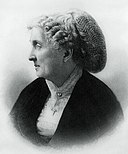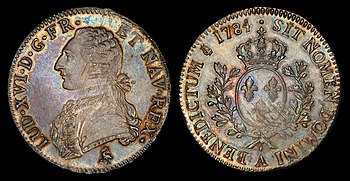From today's featured articleWilliam Cragh (born c. 1262, died after 1307) was a medieval Welsh warrior and supporter of Rhys ap Maredudd in his rebellion against King Edward I of England. Captured in 1290, Cragh was tried and found guilty of having killed thirteen men. He was hanged just outside Swansea twice, as the gallows collapsed during his first hanging. Signs of life were noticed the next day, and in a few weeks he had made a full recovery; he lived for at least another eighteen years. The main primary source for Cragh's story is the record of the investigation into the canonisation of Thomas de Cantilupe, which is held in the Vatican Library. Cragh's resurrection was one of thirty-eight miracles presented to the papal commissioners who in 1307 were charged with examining the evidence for Cantilupe's saintliness. The hanged man himself gave evidence to the commission, after which nothing more is known of him. (Full article...)
Recently featured:
Did you know ...
|
In the news
On this day
More anniversaries:
|
From today's featured list
English actress Emilia Clarke has been nominated and won multiple awards for her film and television work. She was named as a Star of Tomorrow by film magazine Screen International for her role in the Syfy television film Triassic Attack (2010). Clarke rose to international prominence for her role as Daenerys Targaryen in the HBO fantasy drama television show Game of Thrones (2011–2019). She received four Primetime Emmy Award nominations, three for Outstanding Supporting Actress in a Drama Series and one for Outstanding Lead Actress in a Drama Series for the final season. For her charitable work, Clarke won a Shorty Award. Time named her as one of the 100 most influential people in the world in 2019. (Full list...)
Today's featured picture
|
The écu was a gold and silver coinage system introduced in France in 1266 by Louis IX. It was so called because its design included the French coat of arms. The silver coin proved popular but the gold did not, because of the unrealistic ratio of 1:10 used, which did not properly reflect the metals' exchange rate. The écu remained in use for 500 years. Depicted here are two écu coins, the first made of gold and minted in 1641, in the reign of Louis XIII, and the second made of silver and minted in 1784, in the reign of Louis XVI. Between these two dates, exchange rates were unstable, new coins were issued, and existing ones revalued periodically. Coin design credit: Kingdom of France; photographed by the National Numismatic Collection
Recently featured:
|
Other areas of Wikipedia
- Community portal – Bulletin board, projects, resources and activities covering a wide range of Wikipedia areas.
- Help desk – Ask questions about using Wikipedia.
- Local embassy – For Wikipedia-related communication in languages other than English.
- Reference desk – Serving as virtual librarians, Wikipedia volunteers tackle your questions on a wide range of subjects.
- Site news – Announcements, updates, articles and press releases on Wikipedia and the Wikimedia Foundation.
- Village pump – For discussions about Wikipedia itself, including areas for technical issues and policies.
Wikipedia's sister projects
Wikipedia is hosted by the Wikimedia Foundation, a non-profit organization that also hosts a range of other projects:
Free media repository
Wiki software development
Wikimedia project coordination
Free textbooks and manuals
Free knowledge base
Free-content news
Collection of quotations
Free-content library
Directory of species
Free learning resources
Free travel guide
Dictionary and thesaurus






